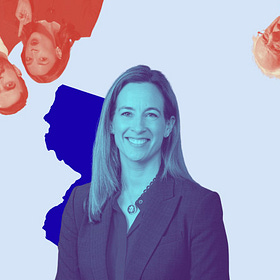Authoritarians Love a Private Militia
Putin has Rosgvardiya. Trump has ICE.
A lot of the buzz around Donald Trump’s One Big Beautiful Bill Act (OBBBA), which the president signed into law on the Fourth of July, hinges on massive cuts to Medicaid and other social benefits. These issues have been the focus of statements from congressional Democratic leadership. Now, the news cycle is already moving on to tariffs. That’s all understandable: millions of Americans are poised to lose insurance coverage. People naturally respond to what hits their health, welfare, and wallets.
However, there’s an element to the OBBBA that managed to be both significant and avoid becoming the center of the public debate around the budget reconciliation bill. I’m referring to the windfall funding Immigration and Customs Enforcement (ICE) is set to receive over the next four years: $45 billion for detention centers and $30 billion to hire more agents. That will make ICE the most generously-funded law enforcement agency in the country, with a budget that rivals several major militaries.
I won’t speculate too much as to what a juiced-up ICE might do. We need only look at its record in this administration’s first six months to generate a list of questions that any elected official worth their salt ought to put to the president.
Leading things off, ICE and its parent institution, the Department of Homeland Security, have already engaged in politicized arrests, detentions, and travel restrictions. Over student op-eds. Over protests. Over tweets. Meanwhile, most individuals currently held by ICE have no criminal record. Will ICE use its new funds to rein in these anti-First Amendment arrests, or will it scale up these abuses with its expanded budget? What would more partisan immigration enforcement mean with birthright citizenship in the crosshairs?
Politicized actions are matched by politicized rhetoric. If Trump administration officials didn’t stretch the limits of the Hatch Act every single day, then DHS Secretary Kristi Noem’s formal press release on the OBBBA’s passage would be headline news. Noem praised the president on government stationary using a permutation of Trump’s MAGA campaign slogan. That’s on top of attacks against “fake news” on the department’s official website. How are these sorts of statements supposed to inspire public confidence that ICE is a professional law enforcement agency and not a private presidential militia? How will ICE be more disciplined and accountable with a bloated budget?
Conditions in ICE detention centers are often substandard, to put it mildly. The majority of OBBBA funding for ICE goes to more detention centers. Should we expect that money to support quality of life improvements for detainees or simply multiply the problem? What are we supposed to think of Republicans’ intentions here when some are hawking “Alligator Alcatraz” merchandise that mocks the plight of detainees?
Finally, let’s return to ICE’s roots: immigration enforcement. The number of illegal immigrants in the United States has remained fairly constant over the past two decades. Hiring 10,000 new officers, as the OBBBA envisions, would put the ratio of ICE agents to undocumented migrants at around 1:400. That’s within striking distance of the Stasi’s one secret policeman to every 166 East Germans and far ahead of the Gestapo’s 1:2,000.
More from The Next Move
So why does ICE need this much additional personnel and funding, and why now?
There’s no point in me wondering aloud. The president and his deputies can respond to these inquiries, and we can draw our conclusions from their answers. As Glenn Beck would say, I’m just asking questions.
Still, as a veteran of the Russian opposition, I’ll indulge in one bit of my own analysis.
In 2016, Vladimir Putin created Rosgvardiya—a new, militarized domestic law enforcement apparatus. Russia had no shortage of police agencies; it inherited several from the Soviet Union, including the Ministry of Internal Affairs (MVD). So what made Rosgvardiya different? It operated directly under Putin’s authority.
Unlike Putin and Rosgvardiya, Trump did not create ICE. However, the 50% boost in ICE’s ranks that Trump is pursuing under OBBBA would change the face of any agency. Now that Gavin Newsom has taken Trump to court over the latter’s deployment of the California National Guard, the president is likely looking for more hassle-free and pliant institutions to do his bidding, and ICE could be the perfect outlet for those ambitions. If nothing else, ICE’s behavior in the past half year ought to make a dramatic expansion of the agency the object of intense public scrutiny.
P.S. Whether you agree or disagree, let’s continue the discussion—in the comments, and on a Zoom call. Yes, Zoom! I’ve recently announced new Zoom calls for paid subscribers so that we can have a real conversation. Check it out and please consider joining.
Related Content
New Jersey's Next Governor and the Death of Progressivism
When State Assemblyman Zohran Mamdani beat former Governor Andrew Cuomo in the New York Democratic mayoral primary, the elite media takes were hot, triumphal, and categorical.
Old Glory is Missing in Action
When Americans on left and right give up on the Stars and Stripes, it's time for a red, white, and blue opposition.







There is a huge difference between ICE and the Stasi and Gestapo. The Stasi and Gestapo didn’t wear masks.
In Syria, they were known as 'mukhabarat.' In Iran, 'SAVAK,' then "Basij." Every authoritarian system needs its enforcement arm and 1:400 ratio is getting so uncomfortably close to those models. We used to study these systems to avoid them, not replicate them. This can't end well.